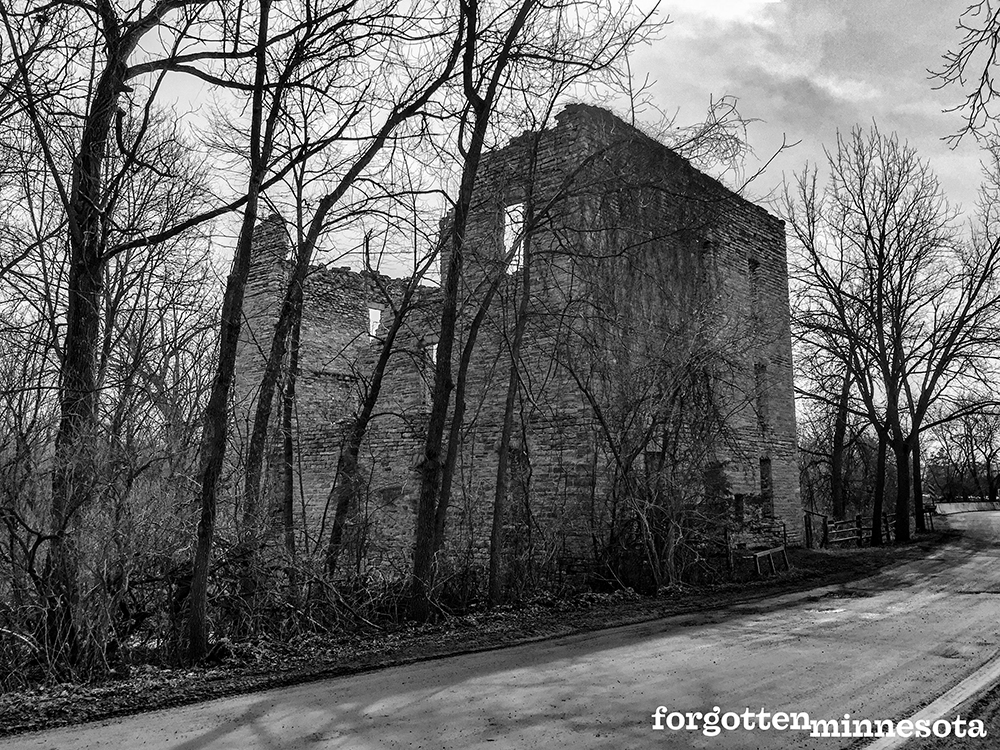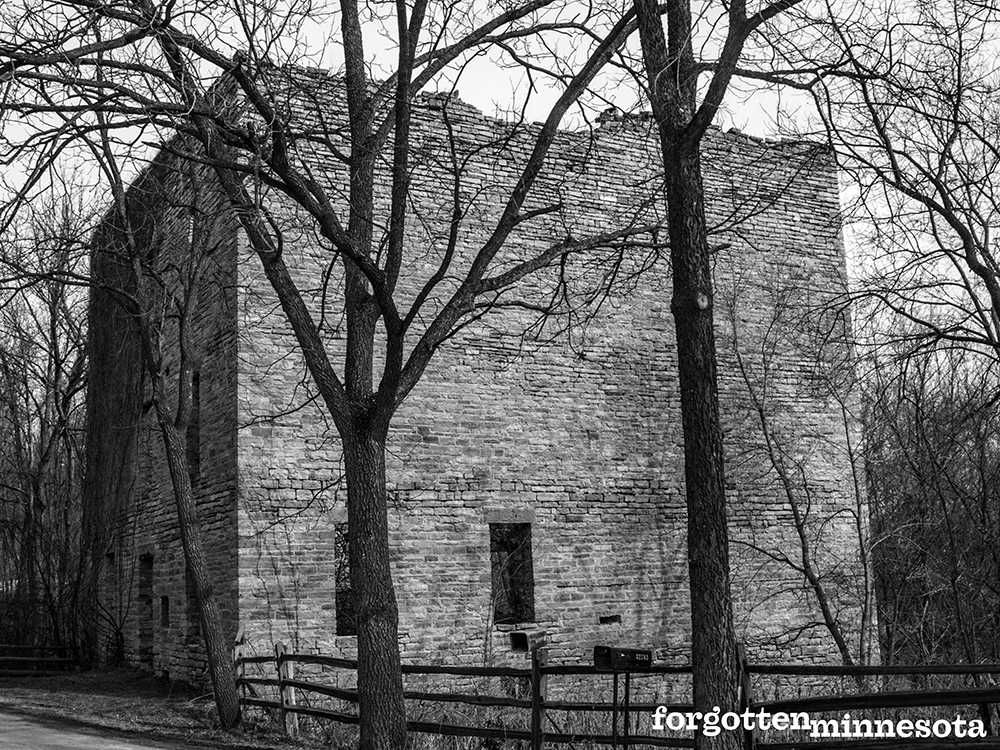Oxford Mill Ruin
The Oxford Mill was located on the bank of the Little Cannon River near Cannon Falls. When the mill was built by C.N. Wilcox and John and Edward Archibald in 1878, it was part of the wheat boom sweeping through the state. Annual record yields of wheat generated the need to process the harvests, causing flour mills to spring up along every river and stream. Wilcox eventually purchased the Archibald brother’s interest in the mill. By 1900, there were twenty-seven flour mills in Goodhue County alone. In the mill’s heyday, it handled more than 400 bushels of wheat per day and employed around 35 men.
Grain was cleaned at a small building to the north of the main building and then taken by a shaker conveyor to the first level of the mill. It was then moved to the second floor by cup-like attachments on a moving belt. The grain was then dropped from the second or third levels through a shaft to the grinding unit. Depending on how much wheat needed to be ground, the large, undershot waterwheel could turn between one to four grinding stones at a time. The bran was then discharged into the river and the flour was sacked. An opening to the side of the west door was used to convey the sacked flour to wagons waiting outside of the mill. Farmers would bring their wheat harvest to the mill and exchange it for flour. Flour from the Oxford Mill would also be taken to Hastings and loaded on boats going to Minneapolis. The mill was gutted by an arson fire in 1905, but the outer walls remained standing. The owners of the mill decided against rebuilding because of the decline in the flour milling industry in the Cannon River Valley.


The four-story outer walls of the Oxford Mill were made of yellow-brown Platteville limestone. The mill was three bays wide, and four bays deep. Along with the windows and doors, there were openings for the water wheel, shaker conveyor, and slatted conveyor. Records show that the interior of the mill still shows evidence of the original construction including metal tie-rods and square depressions for the floor and ceiling beams. Outside of the walls, the mill site remains largely undisturbed except for a modern home across the road from the ruins. The site still retains fragments of the original sluice-way, wheel pit, and tail race.
The wheat boom peaked in 1879, and the flour milling industry began a steep decline that closed most of the mills by the turn of the century. The Oxford Mill ruin is the best-preserved remnant of the flour milling industry in the Cannon River Valley. It was placed on the National Register of Historic Places in 1980.
